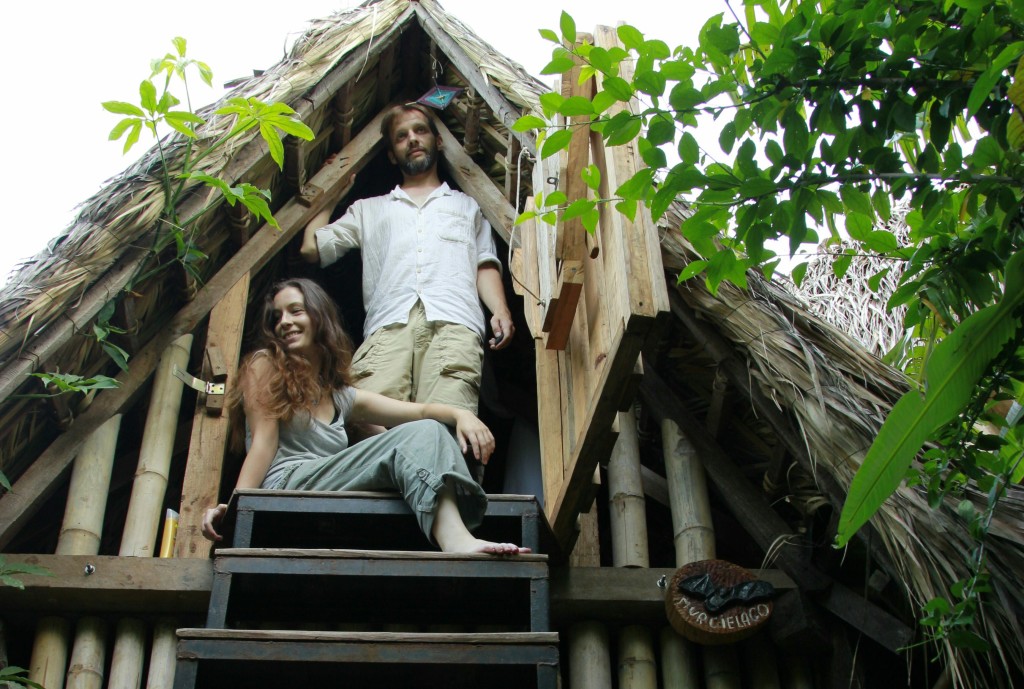
“The most laid-back hippie option on the island” says Lonely Planet about El Zopilote. Not as hippie as my father’s place but yes – we were living a treehugger’s life during the last few weeks.
El Zopilote calls itself ecological finca so officially we’re eco tourists now on the nicaraguan island of Ometepe that only covers 270 km² and has a mere 30.000 inhabitants. The two volcanos that more or less make up the island provide it with fertile soil and all the unused real estate draws foreigners who want to live in a self-sufficient way or who want their share in the eco-tourism business. Just like in Costa Rica is a big thing here and while we saw the locals running through their lots with pesticides on their back the immigrants advertise food from organic production. El Zopilote is 300 meters up the slope from the road where the bus drops you off. It’s just a rubble-path at first until you reach the little gate where a more solid brick-built path starts to wind it’s way up to the reception. Here the two italian owners Bruno and Cristiano planted the first trees in 2002. We saw some pictures where we could see how a more or less barren stretch of land turned into a densely forested jungle over the course of a few years. On their website you can also read:
The idea was to make a hostel on a productive and beautiful farm, working with respect for the environment and nature (not against it). After the first year we decided to stop using machines for our work, and so we sold our chainsaw and car and we bought axes, machetes and shovels. We also decided against making a road to the property, thinking that those who are interested in coming can easily walk the 300 meters that separates us from the main road. This also means that all the materials that we need (including beer, sodas and cement) are brought up by hand.
We provide good work and pay for 7 people from the town and occasionally we have up to 16 people working on an island where 80% of the population is unemployed. Also we have many WWOOFers and volunteers that come to work and learn how a tropical farm operates.
The little cabañas like the one we were living in are hidden amongst the plants and were built from natural stone, bamboo and tropical wood and the roofs are thatched with banana leaves. Every one of them has it’s own charming design. Since El Zopilote only accomodates a maximum of 30 guests at any given time we were a bit lucky to get one of the little dream houses – the bat-hut (cabaña murcielago). It is tiny but very nice and it was our home for about two and a half weeks now. We shared our little realm with lots of geckos, a pretty peaceful rat, centipedes, spiders, moths and whatnot. Stowing away the food safely and out of reach of the little critters and having a mosquito-net is a must. That way we don’t mind our flat-mates and mostly don’t even see them. There was only one incident which we didn’t like and that was a huge cricket shitting on our duvet. Lots of former residents wrote on the walls of our hut and according to one text we were lucky not to find a scorpion in our bed. Martin called the hut our Robinson Crusoe house but for me it was more like a tree-hut – a cozy little retreat that is everything but usual but sufficient.

Our daily routine was not too lazy and consisted of the following:
- getting up at 6 a.m.
- 7 a.m. to 8:30 a.m. yoga lessons (they’re also offering free Salsa, permaculture and handicraft classes)
- 9 a.m. breakfast …
- then learning spanish till noon (let’s switch topic)
- lunch
- free-time till dinner (nightfall is around 5:30 p.m.)
- … and then spending the evening occasionally chatting with other travellers in the restaurant or pizzeria, writing or learning some more spanish.
The only downside is the poor to non-existent internet connection. All in all it’s an almost perfect place. One might also ask how much we actually learned about Nicaragua and it’s inhabitants? Of course we lived pretty much disconnected from normal life and the most people we met were other travellers from around the world. Apart from that we went to one of the villages or small towns every other day to try and catch a glimpse on everyday life of the locals. Our main problem with that is still the language barrier though. At least we can say that the people here are really nice and helpful even so you can’t help but notice that life is not too easy for many of them. In Costa Rica that was less obvious. The kids are as carefree here as everywhere though and are always ready to smile when you look at them.
There’s an awful lot of very young couples with kids here and families seem to be quite big in general.
The rate of unemployment on the island is around 80% according to El Zopilote. Of course that just means that a lot of people don’t work for anybody but themselves. Most people seem to grow food for themselves and seemingly every household has chickens, pigs and sometimes cows.
Men hang around mostly with other men and drinking seems to be a general problem around here. Men with slurred speech staggering around on the streets or at the beach are not an uncommon sight especially during the weekends and even in the morning.
Coming back to our place in the woods – there are a lot of things to discover. A beautiful garden with lots of herbs (where we stole some basil), coconut and banana trees, maracuja and lemon trees (also stole a lemon for salad dressing – disculpe), coffee and cocoa plants, nicely hidden open-air showers and the adventurous toilets. They are compost toilets and they’re actually the cleanest toilets we’ve encountered in Central America so far. It’s also nice that you don’t have to put the used toilet paper into a small bin like usually (due to the bad plumbing everywhere) but can throw it down the hole. For your smaller business there’s two “orinaderos” which are cemented holes in the ground hidden by plants. The cleanliness applies to the whole site, probably thanks to the 30 guests max policy.
Last but not least enjoy the following glimpses into our life at El Zopilote:



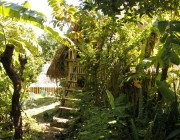
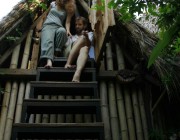


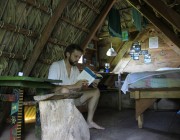
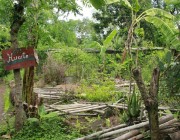

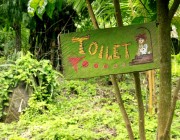
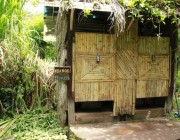

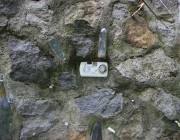



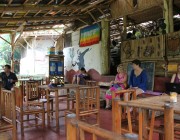


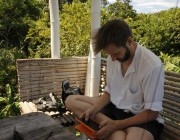
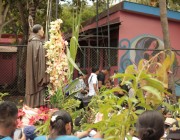
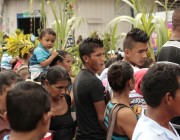

wooooohooooowwwwww
ich hab eure website heut nacht durch einen meeegazufall gefunden 😀 und bin total begeistert. denn ich plane auch so etwas wie eine auszeit aus dem alltag und bin schon geraume zeit am suchen, welche erlebnisse reisende so hatten :-). nach einer groben übersicht scheint ihr an der westküste mittel- und nordamerikas entlang gereist zu sein. eine wunschroute von mir, die aber noch viele fragen aufwirft, wegen kosten etc. 🙂 freue mich schon in den kommenden tagen euren tollen blog weiterzulesen 🙂
liebe unbekannte grüße , die kathi aus würzburg 🙂
Hallo Kathi,
schön, dass dir unser blog gefällt und danke für den netten Kommentar! Normalerweise sollte wordpress uns über neue Kommenatre benachrichtigen, was dieses Mal leider irgendwie nicht geklappt hat. Außerdem verschlang nach unserer Rückkehr der Alltag unsere Zeit und wir kommen erst jetzt dazu die fehlenden Stationen unserer Reise nachzutragen. Daher sorry für die sehr späte Antwort! Sollte immer noch Bedarf an Informationen und Erfahrungsberichten bestehen, helfen wir sehr gern weiter!
Liebe Grüße,
Janina & Martin